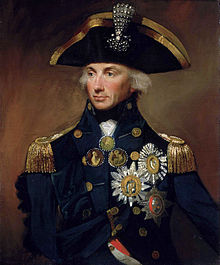Month: January 2018
Lisa Randall – Warped Passages: Unraveling the Mysteries of the Universe’s Hidden Dimensions
https://www.amazon.com/Warped-Passages-Unraveling-Mysteries-Dimensions/dp/0060531096
Ashlee Vance – Elon Musk: Tesla, SpaceX, and the Quest for a Fantastic Future
Walter Isaacson – The Innovators: How a Group of Hackers, Geniuses, and Geeks Created the Digital Revolution
Ginni Rometty
Virginia Marie “Ginni” Rometty (born July 29, 1957) is an American business executive. She is the current chairman, president, and CEOof IBM, and the first woman to head the company. Prior to becoming president and CEO in January 2012, she held the positions of senior vice president and group executive for sales, marketing, and strategy at IBM. She joined IBM as a systems engineer in 1981.
Rometty’s tenure as CEO has been marked by prestigious awards including by Bloomberg who named her among the 50 Most Influential People in the World, and Fortunenaming her among the “50 Most Powerful Women in Business” for ten consecutive years. Her tenure as CEO has been met by criticism related to executive compensation, outsourcing, and IBM’s 22 consecutive quarters of revenue decline
Vernor Vinge – Wikipedia
Vernor Steffen Vinge (/ˈvɜːrnər ˈvɪndʒiː); born October 2, 1944) is an American science fiction author and retired professor. He taught mathematics and computer science at San Diego State University. He is the originator of the technological singularity concept as the phrase is now used and perhaps the first to present a fictional “cyberspace“. He is best known for his Hugo Award-winning novels and novellas A Fire Upon the Deep (1992), A Deepness in the Sky (1999), Rainbows End (2006), Fast Times at Fairmont High (2002), and The Cookie Monster (2004), as well as for his 1984 novel The Peace War and his 1993 essay “The Coming Technological Singularity“.
Hans Moravec
Hans Peter Moravec (born November 30, 1948, Kautzen, Austria) is an adjunct faculty member at the Robotics Institute of Carnegie Mellon University. He is known for his work on robotics, artificial intelligence, and writings on the impact of technology. Moravec also is a futuristwith many of his publications and predictions focusing on transhumanism. Moravec developed techniques in computer vision for determining the region of interest (ROI) in a scene
Craig Silverstein
Craig Silverstein (born 1972 or 1973) was the first person employed by Larry Page andSergey Brin at Google, having studied for a PhD alongside them at Stanford University. He graduated from Harvard and was admitted to Phi Beta Kappa
(MMV) Remotely adding sources to XBMC
The Fountainhead
Ayn Rand
Ayn Rand (/aɪn rænd/; born Alisa Zinov’yevna Rosenbaum /ˈroʊzənbaʊm/, Russian: Али́са Зино́вьевна Розенба́ум; February 2 [O.S.January 20] 1905 – March 6, 1982) was a Russian-American novelist, philosopher, playwright, and screenwriter. She is known for her two best-selling novels, The Fountainhead and Atlas Shrugged, and for developing a philosophical system she called Objectivism. Educated in Russia, she moved to the United States in 1926. She had a play produced on Broadway in 1935 and 1936. After two early novels that were initially unsuccessful, she achieved fame with her 1943 novel, The Fountainhead. In 1957, Rand published her best-known work, the novel Atlas Shrugged. Afterward, she turned to non-fiction to promote her philosophy, publishing her own periodicals and releasing several collections of essays until her death in 1982.
https://en.m.wikipedia.org/wiki/Ayn_Rand
Battle of Trafalgar
The Battle of Trafalgar (21 October 1805) was a naval engagement fought by the British Royal Navy against the combined fleets of theFrench and Spanish Navies, during the War of the Third Coalition (August–December 1805) of the Napoleonic Wars (1796–1815).
Vice Admiral Horatio Lord Nelson, byLemuel Francis Abbott
Vice Admiral Cuthbert Collingwood
Pierre-Charles Villeneuve, the French Admiral
Federico Gravina, the Spanish Admiral
Twenty-seven British ships of the line led by Admiral Lord Nelson aboard HMS Victorydefeated thirty-three French and Spanish ships of the line under the French Admiral Villeneuve in the Atlantic Ocean off the southwest coast of Spain, just west of Cape Trafalgar, near the town of Los Caños de Meca. The Franco-Spanish fleet lost twenty-two ships, without a single British vessel being lost. It was the most decisive naval battle of the war.





